BestReviews is reader-supported and may earn an affiliate commission. Details
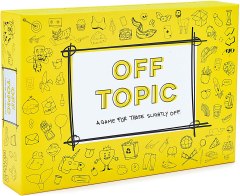
If you are looking for an adult game that's humorous, simple to play, and highly entertaining, this is the one to buy.
If you are looking for an adult game that's humorous, simple to play, and highly entertaining, this is the one to buy.
The game is easy to learn and fun to play. Great for parties and adults of all ages. Can be played by 2 to 8 players. It includes dry erase boards and markers so there's no need to waste paper. Creates a ton of fun and unique conversations.
Some players say the game is similar to Scattergories, but claim it's not quite as exciting. Not for young kids.
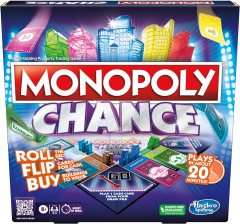
A fast-paced version of the classic game that makes for a fun game night.
A fast-paced version of the classic game that makes for a fun game night.
Each game only lasts an average of 20 minutes, and it can be played by both adults and kids. The shorter play time makes it perfect for parties or family game nights. Card-flipping gameplay introduces the element of chance and makes the game quicker than the original.
Fans of the original Monopoly might not enjoy the chance aspect of this game.

If you are looking for a murder mystery game, this is the best option for family game night.
If you are looking for a murder mystery game, this is the best option for family game night.
Immersive game that requires players to seek clues to solve a murder mystery. Designed for singles or up to five people. Not overly difficult, so it's a good option for the family and is suitable for adults and teens. Includes simple and easy-to-follow instructions.
Not as challenging as some murder mystery games, so some players may find it a bit dull.
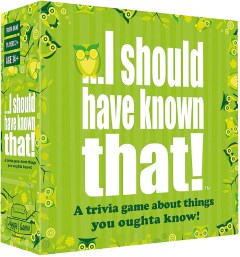
With a neat twist on trivia, this fun game is both challenging and entertaining for teens and adults.
With a neat twist on trivia, this fun game is both challenging and entertaining for teens and adults.
Features intriguing yet fairly simple questions and a unique scoring system that detracts points for wrong answers. Rules are straightforward to follow. There's no limit to how many people can play so it is ideal for larger parties.
The content is geared toward adults and is not suitable or entertaining for kids under 14.
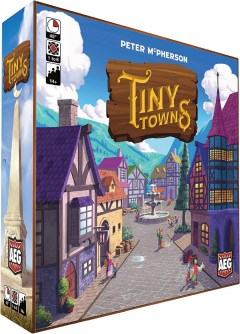
A fascinating game that requires skill and patience—while it's best for those over 14 years of age, some younger kids will enjoy it.
A fascinating game that requires skill and patience—while it's best for those over 14 years of age, some younger kids will enjoy it.
Encourages creativity and planning to build towns. The most successful town builder wins. Can accommodate up to 6 players. A good choice for enthusiasts who enjoy board games that require strategic thinking.
The rules and included instructions are complicated. A few games arrived with missing pieces.

We recommend these products based on an intensive research process that's designed to cut through the noise and find the top products in this space. Guided by experts, we spend hours looking into the factors that matter, to bring you these selections.
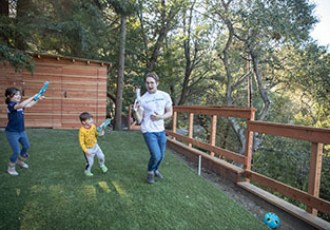
Updated June 2024
Every year, thousands of new board games enter the market, and family and friends come together for fun and exciting cooperation or competition. Board games are played individually, against opponents, or in teams.
The board game industry has boomed in the past few years since the pandemic, when families had to isolate indoors and stay busy with activities. Many board games that have been around for decades and even centuries are still high in popularity today. However, there are a variety of new board games that add more complex levels of difficulty and more advanced features.
Board games come in different categories, and most people can find one that appeals to them.
Most games involve strategy, but with different forms of gameplay. Gamers can solve mysteries, cooperate toward a common goal, defeat opponents, and learn more about each other with some laughs along the way. Board games are marketed toward certain age groups, such as junior games, family games, and games for more mature ages. When searching for a board game, the ages of players is a great way to begin.

Each board game is associated with a specific level of skill. Online listings and box covers show the recommended age range for the game. When looking for new board games, make sure you’re searching for games with an age range that applies to your group of players. If you’re looking for a game to play with young children under age eight, you may want to avoid a game marketed for ages 14 and up. Some more advanced players under the age recommendation may be able to play the game, but some features of gameplay may be too mature, such as gore or horror.
Many adults enjoy playing games that can be played by kids, such as Monopoly and The Game of Life. Any game that includes all family members’ ages makes for an entertaining family game night. Even if a game has a younger age minimum, it doesn’t mean adults can’t play it — these games are easier to learn but are still fun to play.
Do you want to play with your loved ones or against them? Games are either played with multiple people working on the same team toward a common goal, or with each person playing individually to defeat the others. Cooperative games are a smart choice for ice-breaking events and building interpersonal and communication skills. Competitive games are fun and develop autonomous skills and individual problem-solving. If you want to combine cooperative and competitive, many games with opponents can be played in teams. Rather than each person playing individually, they can team up with others to win against other groups.
Strategy: When players take part in strategy games, they’re making decisions and analyzing actions of opponents or consequences of their own decisions. Strategy games often have an element of luck, such as what card a player draws or the number they roll on dice. Strategy games are dynamic, so the course of gameplay can change at any time.
Many strategy games also revolve around an adventure, such as Tiny Towns, Plunder: A Pirate’s Life and Gloomhaven: Jaws of the Lion. The games have unique settings and stories with a path that requires strategy along the way. Some other new board games with a strategic focus are Lattice Hawai’i, Wingspan, and newer variations of Monopoly.
Mystery: Gamers who love to solve problems should look into mystery games. Mystery games present a challenge that needs to be solved by analyzing clues, and many of them have immersive and realistic stories. Clue is a classic mystery game, with new editions like Clue: Bridgerton Edition. Fans of the hit Netflix show Bridgerton will be excited to solve a crime involving the show’s cast of characters. Mysterium Park is another new board game with roleplay in which characters act as psychics to solve a crime at a carnival.
Adventure: While many games have elements of adventure, some revolve around a journey and have more luck than strategy. When playing an adventure game, participants are led on a path to winning based on what numbers they draw, spin, or roll. They can make some strategic decisions, but most of their fate in the game depends on luck during the adventure.
The Game of Life is a classic adventure game where players spin to move spots and build a family, career, and more. The game has new editions like The Game of Life: Jurassic Park and The Game of Life: Super Mario. Other new board games based on adventure include Trekking the World (a terrific choice for travel fans), and My First Dragon Adventure, which is suitable for young children.
Party: Any game can be played at a party, but some are better for humor and getting to know players. Party games have lively challenges and players use their knowledge and skills to complete funny tasks. Most party games are card games that don’t include boards. One party game that includes a board is Drink-A-Palooza, a drinking game that incorporates popular competitions like Flip Cup, Kings Cup, and Beer Pong.
Trivia: Players put their knowledge to the test with trivia games. Players compete individually or in teams to answer questions covering various categories like sports, entertainment, and history. Some new board games that are trivia-based include I Should Have Known That! and Trivial Pursuit: Friends the TV Series, which is packed with trivia related to the hit television show. Trivia games also increase players’ knowledge by exposing them to facts they didn't already know.
Kids’ games: Many games can be played by kids and adults, but some are marketed specifically for children. Any game with “junior” added to its title is designed for kids, such as Monopoly Junior, Scrabble Junior, and Clue Junior. Other games for kids feature their favorite television shows and movies, such as Bluey Scavenger Hunt and Trouble: Bluey Edition.
A wise course of action when looking for new board games is to search for recently released versions of classic board games you love to play. There are numerous editions of Monopoly, The Game of Life, Trivial Pursuit, and Clue, to name a few. Each edition has a specific theme, and gamers can play a game that revolves around one of their favorite shows, video games, or places. Some editions are focused on a spin-off of the original gameplay with new features such as incorporating technology.
In recent years, Hasbro has released a few versions of Monopoly. Monopoly Hamptons is a hit for visitors or residents of the destination and reality TV show fans. Players can find popular Hamptons sites on the board with real photographs. Another edition is Monopoly Super Electronic Banking, which doesn’t come with cash and instead uses a digital device to keep track of finances. It adds a unique edge to the original game and makes it quicker and easier to play. Finally, kids can try Monopoly Junior Super Mario. The board revolves around the classic video game and each player’s game piece is a Super Mario character.
Chess is the top-selling board game, and new versions with various features continue to be made.
New board games have many of the same features as original board games. The focal point of the game is a flat game board made of cardboard. Many games come with place markers and playing cards to draw, and some include dice, writing tools, timers, fake money, spinners, and other pieces.
Many new board games advance with the addition of technology, such as Monopoly Super Electronic Banking. Some new board games have physical and digital components, such as the Teburu game. It’s played using a traditional board as well as an associated app. Many detective games like Detective: A Modern Crime Board Game have digital forms of evidence on a website or app that work alongside physical gameplay.
Many board games have digital versions that can be downloaded on devices and played without physical boards, including Scrabble, Monopoly, chess, and other classic board games. With technological advancements, many new board games also have online versions.
A fun add-on to your existing board games is an expansion pack. Expansions continue the story of a game or provide new ways to complete it. Some new board games already have expansion sets, such as the Wingspan Oceania Expansion.

Inexpensive new board games cost up to $30. Many kids’ board games cost less than $30 due to their having fewer parts and shorter and simpler gameplay.
Mid-range board games cost between $30 and $60. Most board games are in this range, especially those for older children and adults.
Expensive board games cost more than $60. New board games in this range may have more detailed stories and longer gameplay. Some games made with higher-quality pieces like wood, stone, and ceramic (rather than cardboard) are also more expensive.
Some board games have a lot of parts, and it can be helpful to separate them into plastic baggies.

A. Adults may have an edge over kids in some types of games, especially those that use strategy and trivia. Games that are determined mainly by luck are easier to play with kids because everyone has an equal chance to win. Otherwise, adults can use it as a learning experience to teach kids new facts, as well as skills like problem-solving and decision-making.
A. When playing a board game with or around toddlers under age three, be sure there are no small pieces that little ones could choke on. If you have kids under age three around and are playing a game with small parts, play on a surface that’s out of their reach, and don’t leave the game unattended. Most board games are for ages three and up because of tiny pieces, but if it’s safe for younger children, the box denotes that all ages or ages two and up can play.
Get emails you’ll love.
Learn about the products you’re wondering if you should buy and get advice on using your latest purchases.
